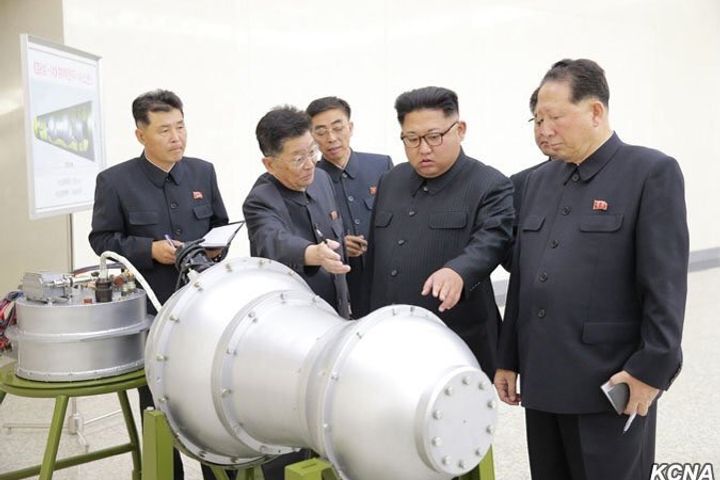 H-Bomb Detonation Caused 6.3-Magnitude Earthquake, DPRK Says
H-Bomb Detonation Caused 6.3-Magnitude Earthquake, DPRK Says(Yicai Global) Sept. 3 -- The 6.3-magnitude shallow earthquake that shook the northern portion of the Korean Peninsula earlier today was caused by a hydrogen bomb explosion, the government of the Democratic People's Republic of Korea (DPRK) said in an official announcement.
The DPRK has successfully tested a hydrogen bomb designed to be mounted on its newly developed intercontinental ballistic missile, its state media reported.
The H-bomb test ordered by leader Kim Jong Un was a "perfect success" and was a "meaningful" step in completing the country's nuclear weapons program, DPRK state television reported.
The announcement came today in the hours following the detection of two tremors.
Minutes after the first, which happened at 3.30 a.m. Greenwich Mean Time, the China Earthquake Networks Center (CENC) reported a light shallow quake nearby, noting that it might be a collapse earthquake.
The CENC placed the magnitude of the first earthquake at 6.3 and the location of its epicenter at 41.35 degrees North latitude and 129.11 degrees East longitude, with a depth of zero kilometers.
A 4.6-magnitude earthquake occurred at 3.38 a.m. GMT at 41.21 degrees North latitude and 129.18 degrees East longitude with an epicenter zero kilometers deep, the CENC said in its latest update.
The DPRK has developed a hydrogen bomb that can be mounted on an intercontinental ballistic missile (ICBM), Pyongyang's state news agency KCNA claimed hours before today's detonation.